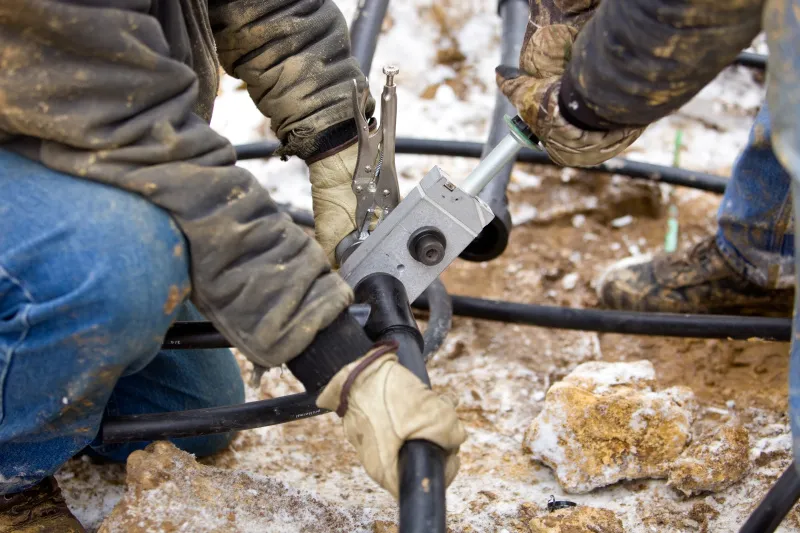Introduction
CPVC plumbing fittings play a vital role in many modern plumbing systems. Despite their advantages, plumbers have raised concerns about potential issues. Understanding these challenges helps homeowners and professionals ensure a durable plumbing setup.
What Are CPVC Plumbing Fittings?
Definition and Composition
CPVC (chlorinated polyvinyl chloride) is a thermoplastic material designed for hot and cold water systems. Its fittings connect pipes, ensuring efficient water flow.
Why CPVC Is Used in Plumbing
CPVC offers superior heat resistance and chemical stability, making it a go-to material for residential and industrial plumbing.
Advantages of CPVC Plumbing Fittings
Durability and Strength
CPVC fittings withstand mechanical stress and last for decades with proper maintenance.
Chemical and Heat Resistance
They resist scaling and perform well in both hot water and chemical exposure conditions.
Common Issues with CPVC Plumbing Fittings
Cracking and Brittleness Over Time
CPVC can become brittle with age, leading to potential cracking and leaks.
Sensitivity to UV Exposure
Prolonged sunlight exposure degrades CPVC, weakening its structure.
Vulnerability to Incompatible Chemicals
Certain solvents and cleaners react negatively with CPVC, causing material degradation.
Plumbers’ Concerns About CPVC Fittings
Challenges During Installation
CPVC requires precise techniques to avoid misalignment and damage.
Risk of Leaks and Failures
Improperly installed CPVC joints are prone to leaks, especially in high-pressure areas.
Problems in High-Stress Environments
High temperatures and water pressure may lead to early failures.
How to Identify Problems in CPVC Fittings
Signs of Wear and Tear
Look for discoloration, visible cracks, or leaks around fittings.
Recognizing Potential Failure Points
Pay attention to joint areas and bends where stress is concentrated.
Factors Contributing to CPVC Plumbing Issues
Incorrect Installation Techniques
Improper solvent welding can compromise the structural integrity of fittings.
Use of Non-Compatible Adhesives
Using incorrect adhesives weakens the bond between pipes and fittings.
Environmental and Water Quality Factors
Hard water and harsh cleaning agents accelerate wear in CPVC systems.
Preventing Problems with CPVC Plumbing Fittings
Proper Installation Practices
Follow manufacturer guidelines for cutting, cleaning, and joining CPVC.
Using Compatible Materials
Only use certified adhesives and pipes designed for CPVC systems.
Routine Maintenance and Inspection
Regularly check for leaks or wear and perform preventive maintenance.
Comparing CPVC with Other Plumbing Materials
CPVC vs. PVC
While PVC is more affordable, CPVC withstands higher temperatures and harsh chemicals.
CPVC vs. PEX and Copper
PEX offers flexibility, while copper provides unmatched durability. CPVC strikes a balance with affordability and performance.
When to Replace CPVC Plumbing Fittings
Recognizing the End of Service Life
If fittings show cracks or consistent leaks, consider replacing them.
Safe Replacement Practices
Hire professionals to ensure safe removal and installation.
Plumbers’ Best Practices for CPVC Fittings
Training and Expertise
Professionals trained in CPVC installation deliver better results.
Tools and Techniques for Longevity
Using the right tools and adhesives ensures a longer lifespan for fittings.
Regulations and Standards for CPVC Plumbing
Certification Requirements
Check for certifications like NSF/ANSI for drinking water safety.
Ensuring Compliance with Industry Standards
Complying with standards prevents long-term legal and safety issues.
Innovations in CPVC Plumbing Technology
Enhanced Manufacturing Techniques
New CPVC formulations improve strength and reduce brittleness.
New Products Addressing Common Issues
Manufacturers now offer UV-resistant and chemical-resistant CPVC products.

Costs of Repairs and Replacements
Financial Implications of Failures
Leaks and damages result in costly repairs if left unattended.
Balancing Repair vs. Replacement
Assess the condition of the system to decide between quick fixes or full replacements.
Conclusion and Final Thoughts
CPVC plumbing fittings remain a reliable choice despite certain challenges. Understanding their limitations and addressing potential issues ensures a lasting system. With proper care and expert installation, CPVC continues to be a trusted plumbing solution.
FAQs
- Why are plumbers concerned about CPVC fittings?
Plumbers worry about brittleness, cracking, and improper installations. - Can CPVC handle high-temperature water?
Yes, CPVC is designed for hot water systems, but it has temperature limits. - What causes CPVC fittings to fail?
Failures often result from UV exposure, incompatible chemicals, or poor installation. - How often should I inspect CPVC plumbing?
Inspect fittings annually to catch early signs of wear or leaks. - Are CPVC fittings environmentally friendly?
CPVC is not biodegradable, but it is recyclable in certain conditions.


















